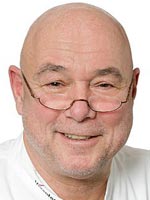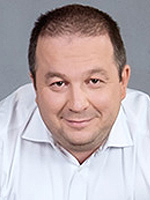In addition to the wear and tear factors, which are due to the poorer blood flow to the tendon tissue with increasing age and the purely mechanical explanations for the occurrence of an Achilles tendon tear, there are also biological aspects that will be briefly explained here.
With regard to these biological aspects, patients who are
- taking certain medications, such as cortisone or cytostatics.
- antibiotics from the group of gyrase inhibitors (fluoroquinolones) such as ciprofloxacin (Ciprobay) or ofloxacin (Tarivid) are also said to increase the risk. They are used for inflammation of the bladder (cystitis), but also diseases of the nasopharynx.
- suffer from diabetes.
- suffer from chronic connective tissue diseases (rheumatism, gout, autoimmune diseases).
- suffer from general circulatory disorders or chronic connective tissue disorders.
- suffer from certain infectious diseases.
Especially when Achilles tendon tears occur on both sides, one can start from biological aspects.
Achilles tendon rupture can also occur with good physical condition. This is particularly the case if the tendon fibers were not warmed up sufficiently during the warm-up phase, or if so-called lactic acid fatigue occurs due to a low pH value. In both cases, the Achilles tendon is mechanically strained, and tearing is promoted.
Causes of Achilles tendon injury
A tear in the Achilles tendon usually occurs spontaneously without the affected person feeling any pain or other symptoms beforehand. In almost 90% of the cases, it is a rupture that occurs when the tendon is under heavy physical strain. Therefore, most of those affected are also young, active men. Nevertheless, there were usually minor injuries (micro-tears) of the tendon that reduced their resilience during the subsequent sporting activity. The tendon can also be damaged by injuries, such as a cut in the heel area. If this injury is very deep, the tendon may be completely severed.
Some medicines also affect the strength of the tendons in the body. Taking such medication can therefore lead to an increased susceptibility to tendon ruptures of all kinds. Medications that can promote the tearing of the tendons are e.g. certain antibiotics (gyrase inhibitors), corticosteroids and immunosuppressants. Although the Achilles tendon can withstand very high mechanical loads, it can be subject to wear and tear due to age or illness.
In people who are inactive in sport, the Achilles tendon is also less resilient because it is not used to stress and therefore yields more quickly when suddenly stressed. The signs of wear also lead to reduced stretchability of the tendon. In addition, the connective tissue fibers that make up the tendon are partially damaged in this case, so that the supportive structure of the tendon is no longer intact. All of these factors can further promote an Achilles tendon tear.
Other causes of Achilles tendon tear
The Achilles tendon as such is mechanically very resilient. One assumes a maximum load capacity of up to 400 KP. The cause of an Achilles tendon tear is usually favored by wear and tear processes, which can be aggravated by a possibly poor training condition. With such causes, the entire musculoskeletal system is significantly less elastic, making the Achilles tendon tear more likely. As a result of maximum stress (unexpectedly high load), for example when starting to sprint, when jumping or coming up after a jump, while skiing or playing football, an Achilles tendon rupture can occur. As a rule, the Achilles tendon tear is accompanied by a loud bang, the acoustic appearance of which can be compared to an open whip. As a rule, the Achilles tendon is completely torn. The Achilles tendon usually tears in the narrowest area. You can feel this point yourself: starting from the uppermost area of the heel bone (trailing edge), you go up about 5cm.
After a tear, plantar flexion (= active flexion of the ankle, e.g. tiptoe) of the foot is no longer possible due to the lack of connection between the calf and rear of the heel bone, the patient can no longer walk normally.
Symptoms
As already explained above, the rupture of the Achilles tendon is accompanied by an audible bang (lash). In addition, the patient suffers from stinging pain and is no longer able to actively plantar flexion due to the calf compression. It is typical that the patient is no longer able to stand on one leg or toe on the diseased leg.
An Achilles tendon tear is visible from the outside due to swelling on the back of the ankle, and a bruise may also be visible. The doctor can also feel a significant dent in the muscles.
Pain from an Achilles tendon tear
An Achilles tendon tear is usually noticed by the affected person because of the immediate onset of pain, which usually makes further stress on the affected limb immediately impossible.
The intensity of the pain depends on the extent of damage to the tendon caused by a complete or incomplete rupture and can be very intense even under rest conditions. The injured person feels as if he has been violently kicked in the heel. The pain, the quality of which is described as suddenly shooting and stabbing, is exacerbated by treading and trying to stand on the ball of the toe. Walking ability is severely restricted.
In addition to the correct implementation of the treatment measures by the attending physician, the therapy also requires the patient to strictly adhere to the sports prohibition and the doctor's instructions, since pain can chronize even after successful treatment and can permanently lead to restrictions in resilience (achillodynia).
Diagnosis of the rupture of the Achilles tendon
A rupture of the Achilles tendon can be diagnosed in different ways. If the tendon is completely severed, a gap above the heel can often be felt. In addition, with fresh Achilles tendon rupture, there is a strong and painful swelling of the tissue, as well as reddening or bluing of the heel region. The patient can also no longer tiptoe because the Achilles tendon tear severed the connection between the calf muscles and the heel bone. If the patient lies on his stomach on a couch and squeezes his calf muscles, the foot would normally have to bend towards the sole of the foot (plantar flexion). In the case of an Achilles tendon tear, this no longer happens for the reasons mentioned. This phenomenon is also called the positive Thompson test.
The apparatus diagnosis of the Achilles tendon rupture is primarily based on sonography (ultrasound examination). The treating physician can use the ultrasound device to directly display the affected region on the screen and examine the extent of the crack. Thereafter, the choice of therapy method is also based. If the ends of the Achilles tendon are only slightly apart, the patient can usually be helped by conservative therapy. However, if the distance between the ends is large, often only one operation can help. In addition to ultrasound, an MRI of the Achilles tendon can also help diagnose Achilles tendon rupture. The MRI is used when the ultrasound is not meaningful enough or atypical complaints are given without a clear cause. Healed ruptures, incomplete tears and other changes in the tendon can be better recognized on the MRI.
Diagnosis of an Achilles tendon tear
As soon as the first symptoms of the Achilles tendon tear have subsided, the patient will find that he is no longer able to walk normally. One speaks of functional failures, which among other things are noticeable in that the patient is usually not able to perform a (one-leg) toe stand.
Clinical examination
In the first hours after the Achilles tendon tear, the attending doctor can feel a dent a few centimeters above the actual Achilles tendon insertion. However, this is only possible in the first hours after the accident, later a hematoma forms there due to the bleeding, which would make the diagnosis of the Achilles tendon tear significantly more difficult.
Thompson test
Plantar flexion is usually eliminated after the Achilles tendon tear. In patients with deep flexor muscles, residual flexion can be retained, which, however, generally differs significantly from the normal state. In order to be able to better assess plantar flexion (bending of the foot), the so-called Thompson test can be used to diagnose the Achilles tendon tear. For this, the treating doctor presses on the calf area. This compression (see figure) makes plantar flexion impossible in the event of an Achilles tendon tear.
Typical for an Achilles tendon rupture is also the failure of the Achilles tendon reflex, the testing of which is usually quite painful for the patient. In about 70% of all cases, an Achilles tendon tear can also be detected and precisely localized using sonography.
In order to exclude a bony tear of the Achilles tendon, an X-ray can also be taken. This exclusion can have a decisive impact on therapeutic care.
Course of the rupture of the Achilles tendon
The course of the Achilles tendon tear is mainly influenced by the chosen treatment method. Surgical therapy can more often be associated with wound healing disorders and infections in the surgical area. With intensive therapy in connection with physiotherapy training, the original flexibility and performance of the tendon can be regained in most cases. It is also crucial whether the tendon is completely torn or just torn. If it is completely torn, a distinction can also be made as to whether it is torn off with a piece of bone or not. Since the therapy also depends on the type of Achilles tendon damage, this factor is decisive for the course and prognosis of the disease. Especially with high-performance athletes, full performance can often no longer be achieved because the tendon cannot return 100% to its original state. There remains at least a remainder of scar tissue, which can already reduce the level of performance in high-performance sports. It is important that the Achilles tendon tear is recognized early and treated accordingly. Otherwise there may be a permanent functional restriction with a decrease in the calf muscles. The same applies to failed operations or inappropriate therapeutic measures.
Conservative therapy of the Achilles tendon tear
As part of the diagnosis, the extent of the Achilles tendon tear can be determined using ultrasound and X-ray. The ultrasound examination is carried out in the pointed foot position. If the doctor determines that the cracked ends touch when the foot is lowered, the tendon ends can heal. Surgical treatment of the Achilles tendon tear can then be dispensed with.
One of the reasons for this is the stretchability of the tendon. If necessary, it can be stretched to approximately twice its size. Special shoes with an increase in the heel area and an immobile, firm tongue are also helpful for conservative therapy. Similar to a heel shoe, the foot is raised to a pointed foot position, which allows the tendon ends to make contact. In most cases, a normal load can be carried out relatively quickly after a phase of partial load. Constant checks by the attending doctor should be carried out to monitor the healing process and optimize it if necessary. Ideally, the conservative treatment of the Achilles tendon tear can be considered complete after about six to eight weeks.
Course of therapy
There are two opposing forms in the course of therapy for an Achilles tendon tear:
Immobilization
The injured foot is fixed in a plaster, shoe or splint for 4-9 weeks. Loads and movements are not allowed.
Early functional follow-up treatment
The foot can be moved shortly after the operation. Under physiotherapeutic control, the person concerned gradually learns to increase the load. Different aids such as plaster and orthosis are also used here.
To date, studies have not found any relevant differences in the success of therapy. Nevertheless, there is a tendency for early functional follow-up treatment in Germany! Such a typical course of therapy can e.g. look like this:
In the first days after the operation, one speaks of an inflammatory phase. Here the focus is on the observation of the beginning healing processes. At this time, it does not make sense to put direct strain on the Achilles tendon. Instead, patients should use other joints, such as move the knee joint. You can also train with the healthy leg to maintain muscle strength. The affected foot should be raised during the inflammation phase.
Now follows the so-called proliferation phase, in which the patient wears an Achilles tendon relief shoe (orthosis) day and night. Under specific physiotherapy guidance, exercises promote both mobility and coordination. At this time, no strength exercises may be carried out, as the tensile strength of the Achilles tendon has not yet been restored. Basically, therapy is only allowed in the pain-free area at this time.
In the so-called remodeling phase, the affected person begins to build up the strength of the shrunk calf muscles from the 8th week onwards. In addition, the mobility is further increased, but always in the awareness that the tendon has still not reached its complete stability.
Jumps may be performed at the earliest in the 12th week, but not infrequently noticeably later. Patients often start hopping on the spot and increase the exercises to deep jumps, e.g. a pedestal. Based on the ability to jump, the attending orthopedic surgeon and physiotherapist can also determine when sports can be started again.
Achilles tendon surgery
During the operation, the skin is cut open over the Achilles tendon. A few cm long cut is necessary for this (the length can vary).
Torn and dead tendon parts are removed and the tendon ends are sewn together again. A suture through the bone (transosseous) is sometimes necessary.
After the operation of the Achilles tendon tear, the leg is immobilized to relieve the suture with the help of a lower leg plaster in about 30° to 40° pointed foot position. The patient may then only partially load the leg. After about two weeks, the threads are removed and a new plaster cast is put on. As a rule, the degree of the pointed foot position is reduced (pointed foot position about 10 ° to 20 °). Even now, the leg may only be partially loaded for a further fourteen days. Then the plaster is removed again and after checking the healing process another lower leg plaster is made. A further pointed foot position can now generally be dispensed with; the patient can then - if he is free of pain - put a full load on the leg again. The plaster is removed after another 14 days after the operation. After a partial load, the load is gradually increased until the patient is able to carry out the full load. This increase in stress and in particular joint mobilization should be carried out and trained in the subsequent rehabilitation measure (movement therapy).
In a scientific comparison of the forms of therapy, a higher healing rate is ascribed to the operative therapy. However, it should never be forgotten that this is an operation and that the risk of wound infection always plays a role. Newer surgical techniques can sometimes significantly reduce the risk of infection (see prognosis).
Some recent studies show that a good result can be achieved, especially in older patients, even without surgery if the tendon ends are not far away.
After an Achilles tendon tear, therapy should be started relatively quickly. If the decision is made to operate the tendon, this usually takes place within a week, because if the waiting time is too long, the calf muscles shorten and the prognosis is unfavorably shifted. As long as surgery is carried out within the first 24 hours, the doctor speaks of a "fresh" Achilles tendon tear: the calf muscles have not yet shortened and the tendon ends are not stiffened. The duration of the operation depends on the findings, but also on the surgical technique used.
Generally, there are two surgical techniques that can be used for an Achilles tendon tear.
The classic, open operation, which is carried out by default, usually takes about an hour. During the open Achilles tendon surgery, an approximately 10 cm long skin incision is made on the heel. After removing the damaged and torn tendon parts, the surgeon sews the two ends together again ("end-to-end seam"). For this he uses a self-dissolving thread.
Percutaneous or minimally invasive technology is more modern, but also not suitable for all injuries. Only by a single, about 2 cm. long cut above the tendon tear, the threads are placed under ultrasound control using a special instrument. If the decision is made to use a minimally invasive procedure, you can expect a relatively short duration of the operation. The open intervention, however, takes more time.
Aftercare and rehabilitation
It is important that the Achilles tendon is given enough time to regenerate, which is why careful post-treatment is urgently required. After surgery, good wound healing is essential for the further healing process. For this reason, care should be taken to irritate the surgical site as little as possible in the first days after the operation. In addition, anticoagulant medications such as heparin are prescribed in the first period, as well as pain-relieving medication.
The common procedure after the operation follows the concept of an early functional aftercare. This means that the foot can be well loaded again after a short time. This is achieved by putting on a special shoe, which is usually used three to five days after the operation. The shoe is usually worn for the next six to eight weeks, with physiotherapy usually already starting after the third or fourth week. During this time, regular examinations should still be carried out to ensure that the tendon heals well. Light sporting activities can be started after just 12 weeks. A special insert to relieve the tendon should be worn for at least half a year.
Irrespective of the form of therapy of the Achilles tendon tear, movement therapy should follow. As part of the conservative therapy, in which the patient was provided with special shoes, the leg is fully resilient again after a short time, so that movement therapy can be started about three weeks after the tear. According to statistical surveys, wearing the shoes can be avoided after about eight weeks.
Mobilizing physiotherapy should be performed especially after the surgical treatment of the Achilles tendon tear. It can generally be assumed that the patient will be able to exercise again after three to four months. For active athletes, however, the following applies: Training in the sense of competition training should only be carried out again after about six months of care. The extent to which you will be able to achieve top performance can be seen very differently on an individual basis.
Risks of Achilles tendon surgery
The risk of Achilles tendon surgery is very low these days. Modern anesthetics and a well-coordinated surgical team can limit the risks of the surgery to a minimum.
However, as with any operation, certain risks cannot be excluded. Since a cut is made through the skin during the surgical procedure, there is a risk of infection of the wound.
Wound healing disorders occur most frequently, which can later show up in a heavily pigmented, conspicuous scar. Correct wound care, such as regular dressing changes and disinfectant ointments, can easily avoid such consequences. With known wound healing disorder, e.g. in the context of diabetes mellitus, there is the possibility of preventive antibiotics
In rare cases, surgery can also damage nerves, particularly the purely sensitive sural nerve. Since it runs right next to the Achilles tendon, it can be overlooked and damaged. If the nerve is accidentally injured, numbness or discomfort occurs in the area of the heel and the side of the foot. However, experienced surgeons can usually localize it well.
Dreaded, though rare, is a repeated tear of the Achilles tendon after the operation. The doctor then speaks of a "rerupture". Statistically, this occurs after an operation, depending on the study, in 1-4% of the cases and thus performs better than conservative therapy without surgery.
In addition, there is a risk that considerable loss of strength and reduced mobility can occur after an operation. This must be prevented by careful aftercare and consistent treatment through physiotherapy. However, in the case of competitive athletes it cannot be guaranteed that the performance will return to the performance after the operation.
Most of the time, the procedure can be performed under local anesthesia, so that any risks of general anesthesia are excluded.
Forecast
Seen from a prognosis, an Achilles tendon tear can be assessed as good. In the case of ideal therapy and corresponding rehabilitative measures, the level of performance before the accident may even be reached again.
However, an Achilles tendon tear often means the end of a career for top athletes, especially for those who have qualified in jumping and / or running sports.
Regarding the form of therapy, it can be said that the prognosis after surgical therapy is statistically better than after conservative therapy. While about 4% after surgery, there are renewed tears, the rate of conservative therapy is around 15%.
However, postoperative swellings often persist. Patients also report feeling disorders in the heel and ankle area.
No therapy
Failure to treat the Achilles tendon rupture can result in severe functional loss. The ends of the tendon grow together scarred within a few months, but this leads to a significant lengthening of the tendon through the scar tissue. This causes the calf muscle to function less because the elongated tendon cannot develop the optimal strength. Affected patients suffer from weakness in the ankle. In this case, full functionality cannot be achieved even through intensive training measures. A comparable clinical picture can develop in the event of unsuccessful therapeutic measures. Therefore, an experienced doctor should be consulted to treat Achilles tendon rupture.
Healing time
The healing time of an Achilles tendon rupture depends on the severity of the tear. If the tendon is completely torn, the duration of therapy is usually at least 6-8 weeks. The strain on the tendon should slowly increase again and only return to the starting level after about 3 months. Heavy loads, such as in high-performance sports, should only be carried out again after about 6 months.






















 Loading ...
Loading ...


